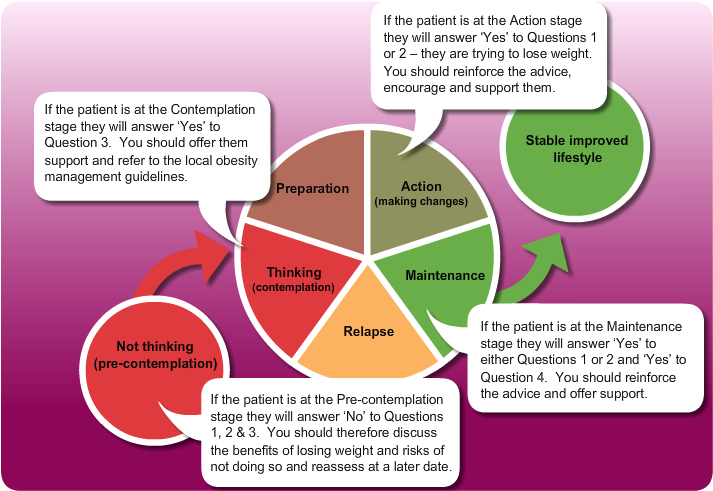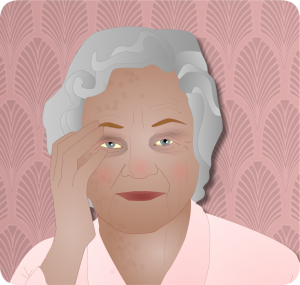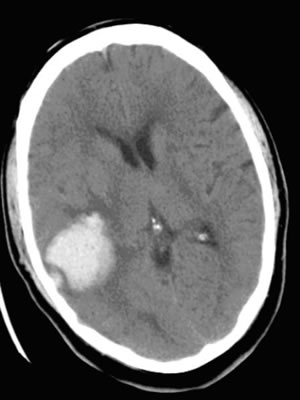The Readiness to Change model can be used to assess if someone is ready to lose weight.
Questions to ask the patient
- In the past month, have you been actively trying to lose weight? Y/N
- In the past month, have you been actively trying to keep from gaining weight? Y/N
- Are you seriously considering trying to lose weight to reach your goal in the next 6 months? Y/N
- Have you maintained your desired weight for more than 6 months? Y/N

It is important to recognise if a person has an increased risk of developing obesity.
The National Obesity Forum suggest the following measurements and investigations are carried out to assess risk:
- Body Mass Index (BMI) calculated using a person’s height and weight
- Waist circumference
- Blood Pressure
- Fasting blood glucose
- Fasting lipid profile
- Thyroid function


Overall prevalence 25 – 60%
- Ischaemic stroke 25 – 30%
- Haemorrhagic stroke 34 – 60%
Headache after stroke or TIA is often overlooked by clinicians as a result of concentrating on clinical signs and stroke management
Which strokes most commonly cause headaches?
More often associated with:
- Haemorrhage (see picture below) than infarct
- TIA than stroke
- Cortical than deep white matter strokes
- Thrombotic than embolic stroke
- Venous than arterial stroke
Giant Cell Arteritis is usually treated with steroid medicine. Treatment should begin as soon as possible to prevent sight loss.
- High dose prednisilone (e.g. 60mg daily) for several weeks and then reduced over a period of years
- Unfortunately prednisilone will raise blood pressure and blood sugar and thus worsen the risk factor profile
- Antiplatelet drugs may reduce risk of embolism from damaged vessels – but may worsen indigestion caused by steroids
For more information on giant cell arteritis (temporal arteritis) visit NHS UK.





